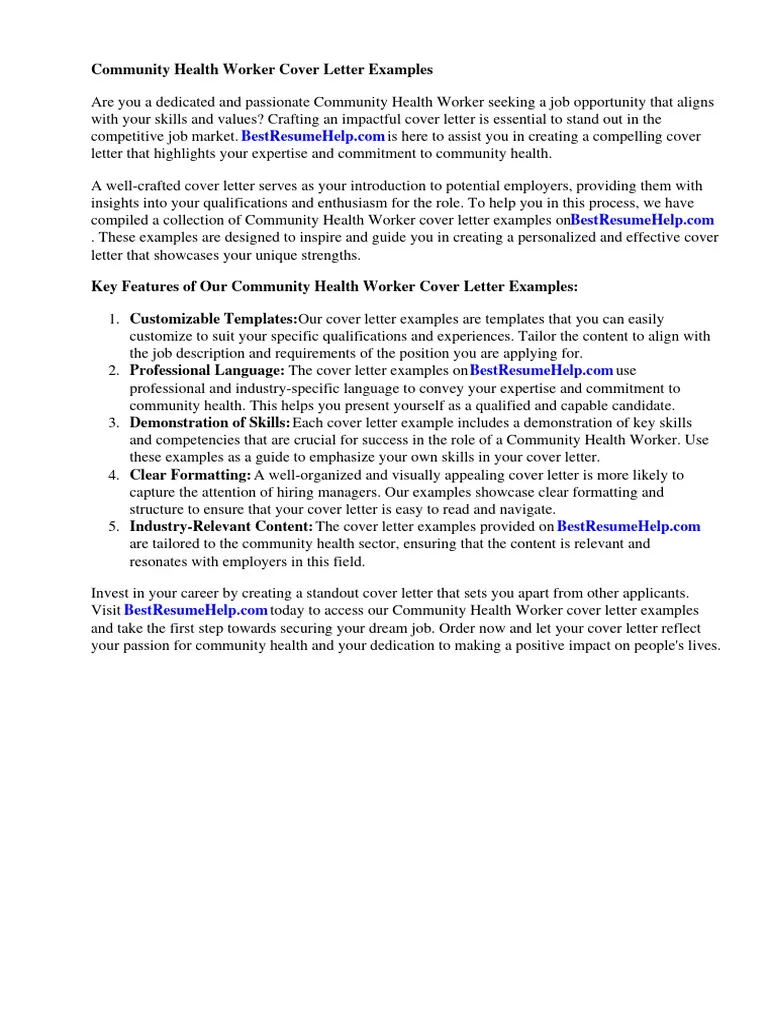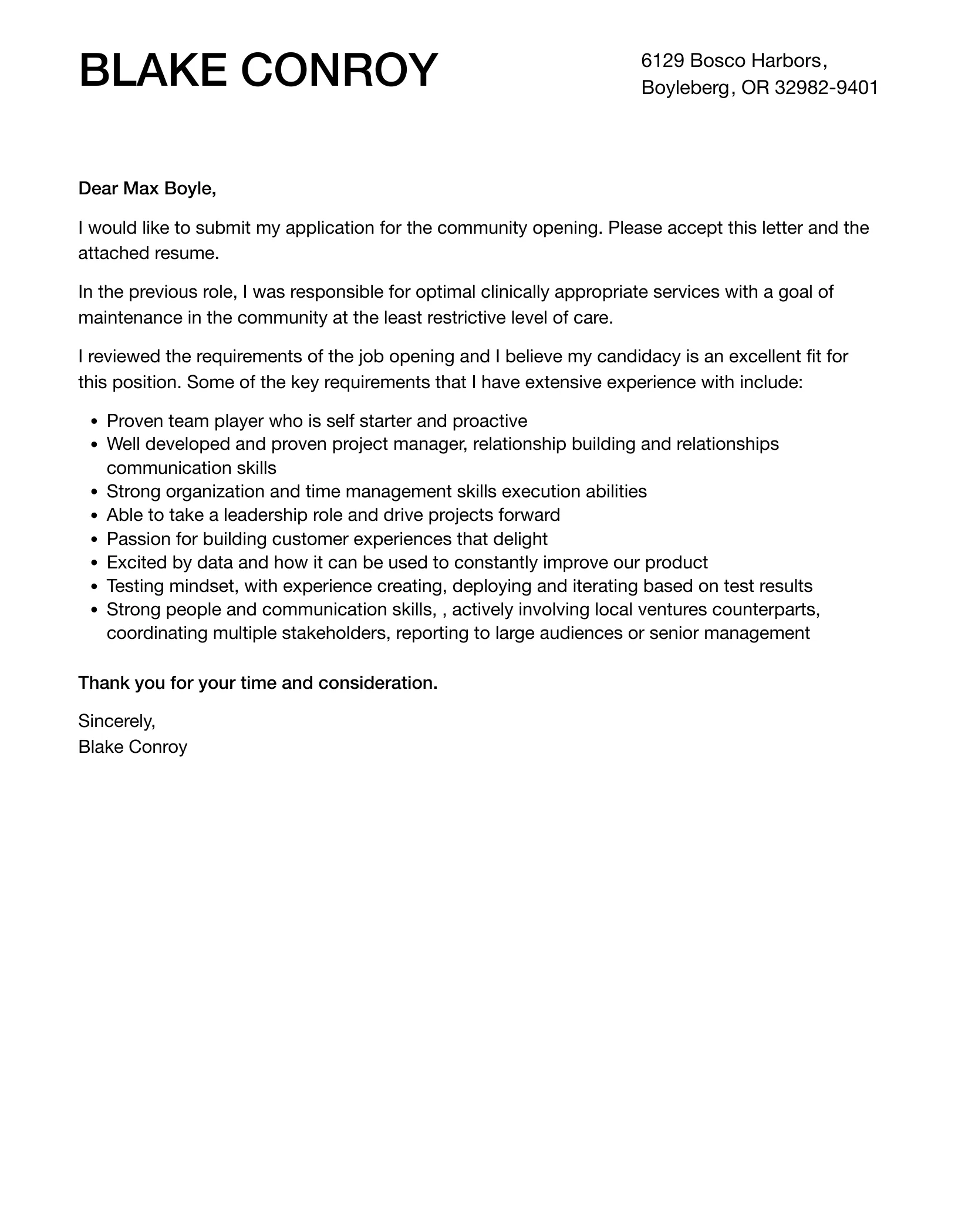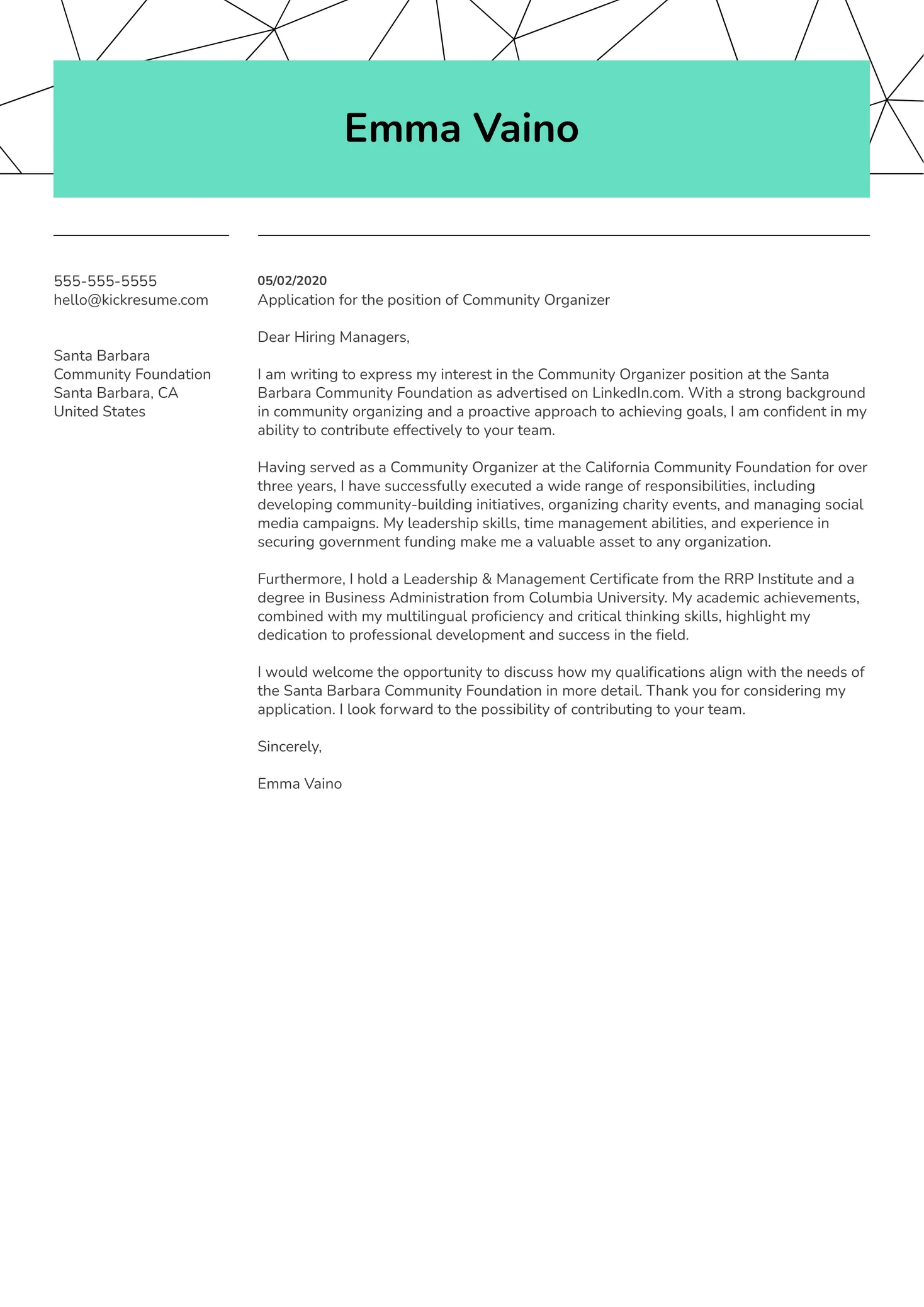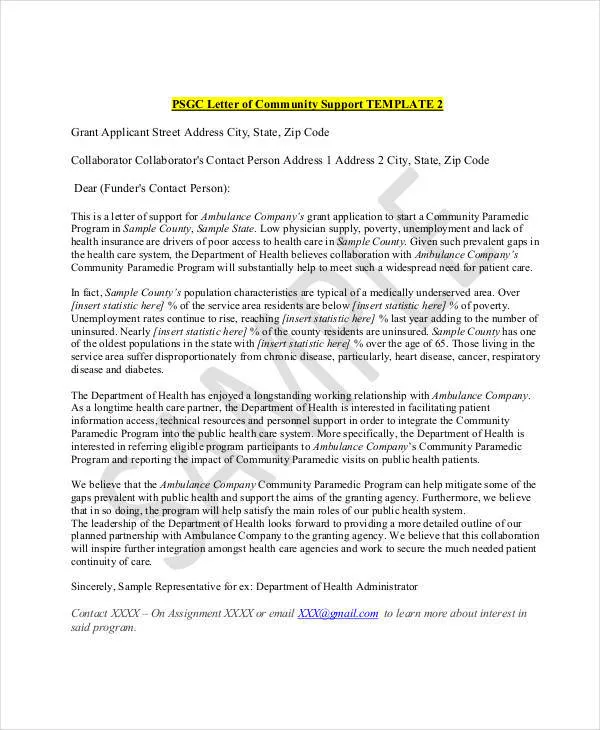Understanding the Importance of a Community Work Cover Letter
A community work cover letter is more than just a formality; it’s your first impression. In the competitive landscape of community work, where passion and dedication are paramount, a well-crafted cover letter can be the key to unlocking your dream role. It’s your opportunity to introduce yourself, showcase your skills and experience, and, most importantly, demonstrate your genuine interest in the organization and its mission. A compelling cover letter sets you apart from other applicants, giving you a significant edge in the hiring process. It allows you to go beyond the bullet points of your resume and tell your story, revealing your personality, motivations, and aspirations within the community work sector. Remember that a strong cover letter is not just about what you’ve done, but also about why you’re driven to do it.
Key Components of a Community Work Cover Letter
To create a cover letter that resonates with potential employers, it’s crucial to understand its essential components. These elements work in concert to create a persuasive and impactful document that highlights your qualifications and enthusiasm for community work. Focusing on these components will ensure you present yourself in the best possible light, increasing your chances of securing an interview and ultimately, the job. By paying close attention to these aspects, you can craft a cover letter that truly reflects your commitment to community service and your potential contributions to the organization.
Header and Contact Information

Begin with a professional header that includes your full name, address, phone number, and email address. Ensure your contact information is accurate and up-to-date. The header sets the foundation for a professional presentation and makes it easy for the hiring manager to reach you. Consider using a clear and easy-to-read font. This header is your digital business card, so make sure it’s clean, organized, and easy to find. It should be positioned at the top of the page, either left-aligned or centered, depending on your preference, but be consistent throughout the document. Double-check all information for accuracy.
Professional Greeting
Address your cover letter to a specific person whenever possible. Research the hiring manager’s name and use a formal salutation, such as “Dear Mr./Ms. [Last Name].” If you are unable to find a specific name, using a general greeting like “Dear Hiring Manager” is acceptable, but try to avoid generic greetings like “To Whom It May Concern.” Personalizing your greeting demonstrates that you’ve taken the time to research the organization and pay attention to detail. It adds a touch of professionalism and makes your letter feel less generic. Take the time to find the right person to address your letter to as this can significantly boost your chances.
Opening Paragraph
The opening paragraph is your first chance to grab the reader’s attention. State the specific position you are applying for and briefly mention where you saw the job posting. Then, provide a concise and compelling statement that highlights your key qualifications and expresses your enthusiasm for the role and the organization. This paragraph should quickly capture the reader’s interest and make them want to learn more. Consider using a strong opening statement that showcases your passion for community work, your relevant skills, or a notable achievement. Make sure your opening is clear, concise, and reflects your understanding of the role’s requirements and the organization’s mission. Highlight something that makes you stand out.
Highlighting Relevant Skills and Experience

The body of your cover letter is where you demonstrate how your skills and experience align with the job requirements. Carefully review the job description and identify the key skills and qualifications the employer is seeking. Then, provide specific examples of how you have demonstrated those skills in previous roles or volunteer experiences. Use the STAR method (Situation, Task, Action, Result) to illustrate your accomplishments. This helps the hiring manager understand not only what you did but also the impact of your actions. The examples you choose should directly relate to the responsibilities outlined in the job description. This ensures that your letter is relevant and showcases your ability to succeed in the role.
Showcasing Volunteer Work and Community Involvement
Community work often values experience beyond traditional employment. If you have volunteered, participated in community projects, or engaged in any activities that demonstrate your commitment to helping others, be sure to highlight them. Describe your role, the organization’s mission, and the impact of your contributions. Quantify your achievements whenever possible. This can include the number of hours volunteered, the number of people served, or any specific outcomes you helped achieve. This shows the potential employer that you are passionate and willing to work without expecting money. Showcasing your involvement is a strong indicator of your dedication and enthusiasm for community work.
Quantifying Achievements and Impact
Whenever possible, quantify your accomplishments. Use numbers, statistics, and data to demonstrate the impact of your work. For example, instead of saying “Improved volunteer engagement,” say “Increased volunteer engagement by 20% through the implementation of a new training program.” This provides concrete evidence of your skills and the value you brought to previous roles. Quantifiable achievements make a more persuasive case for your abilities. They help the hiring manager visualize your contributions and understand the positive outcomes you can generate. Use metrics such as the number of people assisted, funds raised, or programs implemented to illustrate your achievements.
Tailoring Your Letter to the Specific Role

Customize your cover letter for each job application. Don’t send out a generic template. Research the organization and the specific role to understand its requirements and values. Then, tailor your letter to address those specifics. Mention the organization by name and express your understanding of its mission. Highlight the skills and experiences that are most relevant to the specific role. Showing that you understand the organization and have a genuine interest in the position will significantly increase your chances of getting noticed. Tailoring your letter demonstrates that you have taken the time to carefully consider the role and are genuinely interested in the opportunity.
Demonstrating Passion for Community Work
Community work is often driven by passion. Your cover letter should convey your genuine enthusiasm for the field and your dedication to making a difference. Share your personal motivations for pursuing community work, and explain why you are drawn to the organization’s mission. Demonstrate your knowledge of the challenges and rewards of community service. Let your passion shine through your writing. Your enthusiasm should be evident in every paragraph and every sentence. This will create a connection with the hiring manager, who is also likely driven by a passion for community work.
Expressing Your Motivation and Goals
Articulate your reasons for wanting to work in community work. Explain what motivates you to serve others and contribute to the greater good. Describe your goals for the position and how you envision making a positive impact. Align your personal goals with the organization’s mission and objectives. This demonstrates your commitment to the cause and indicates that you are looking for a long-term fit. Sharing your goals gives the hiring manager insight into your aspirations and shows that you are a forward-thinking candidate. Show how you can help the organization achieve its objectives.
Highlighting Your Understanding of the Organization’s Mission

Research the organization’s mission, values, and programs. Then, in your cover letter, explicitly mention your understanding of their mission and explain how your skills and experience align with their goals. Show that you have taken the time to learn about the organization and are genuinely interested in contributing to their work. Align your personal values and aspirations with the organization’s mission. This demonstrates that you are not just seeking a job but are also seeking to be part of a team. Understanding the organization shows that you are serious about community service.
Closing Your Cover Letter
The closing of your cover letter is your final opportunity to leave a lasting impression. It is essential to end on a strong note and to reiterate your interest in the position. This final paragraph should be concise and compelling, prompting the reader to take action.
Call to Action
End your cover letter with a clear call to action. State that you are eager to learn more about the opportunity and are available for an interview. Provide your contact information again and express your gratitude for their consideration. Make it easy for the hiring manager to contact you. You want to make sure you get a response. A strong call to action encourages the hiring manager to take the next step in the hiring process, increasing your chances of moving forward. End with confidence and enthusiasm.
Formal Closing and Signature

Use a formal closing, such as “Sincerely,” “Best regards,” or “Thank you.” Leave space for your signature if you are printing the letter, or type your name below the closing if submitting electronically. If you are submitting an electronic version, you can also scan in your signature and include it. Maintain a professional tone throughout your closing. Your signature adds a personal touch. Ensure that your signature is legible and reflects your professionalism. Double-check your closing and signature to ensure accuracy.
